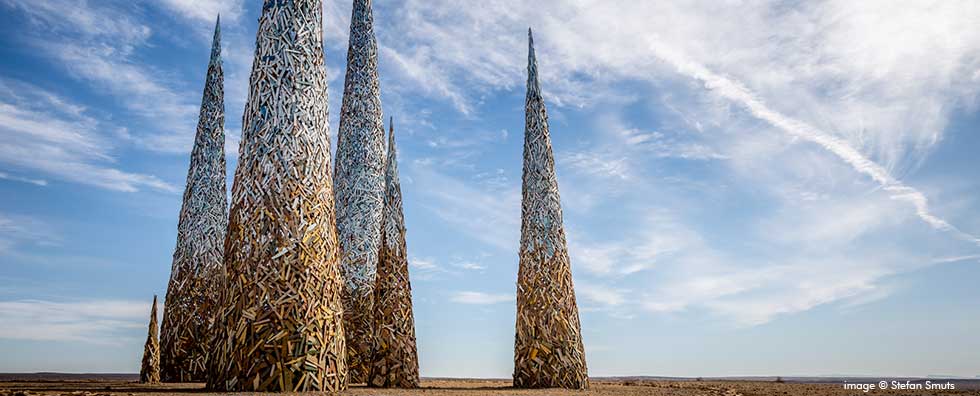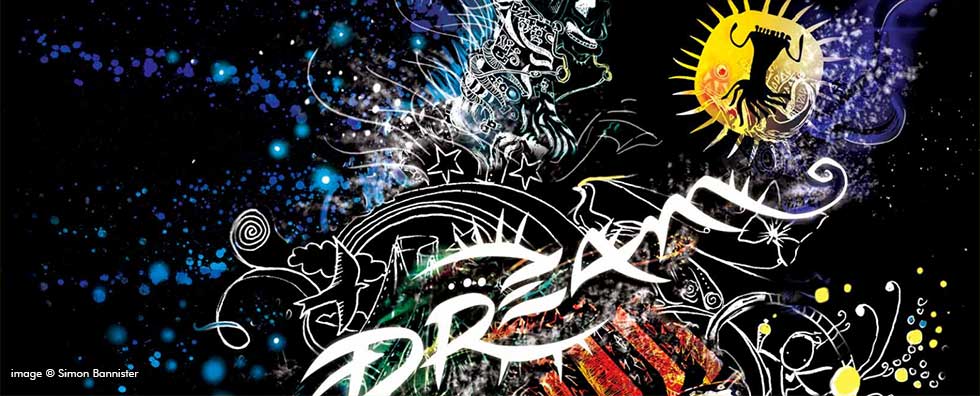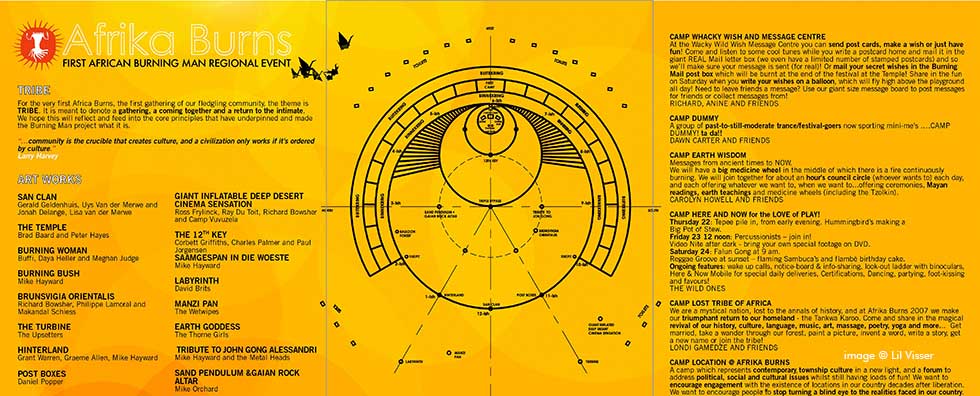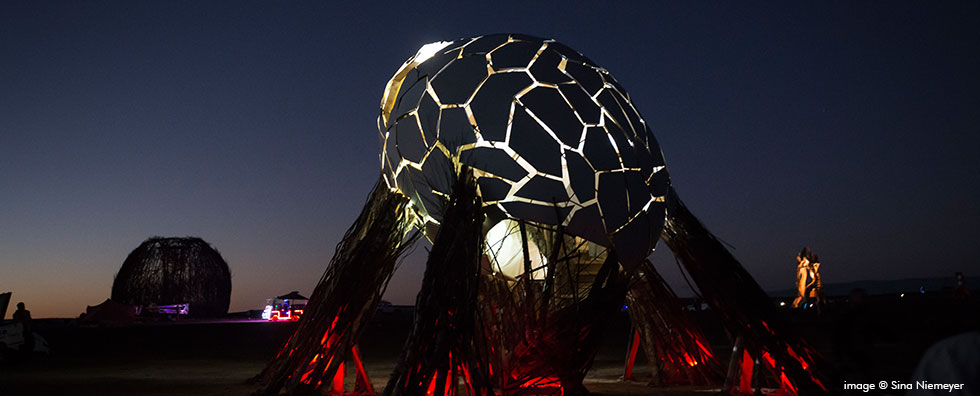Burning Art
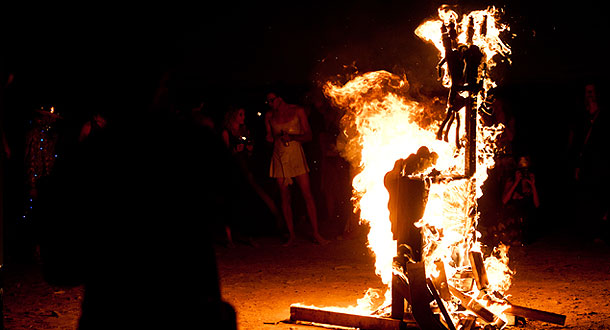
So you’re planning on building something beautiful and then burning it? Great – but before you design and plan with a mind to burn your piece, consider carefully whether burning is important to the meaning of your piece. Just because the piece is going to AfrikaBurn doesn’t mean you have to send your artwork up in a ball of flames. We love art that burns beautifully – but we also really love art that has a life beyond Tankwa Town.
Should You Burn Your Artwork?
Not everything can or should burn. For example, if the piece can be re-purposed and re-erected in another location where it will bring joy or beauty to another community, that’s a clear case for not burning it. Another case would be if the materials you used to build the piece could be donated to a community in need and re-purposed for building materials. In the case of artworks built using plastics or other materials that give off toxic fumes, there’s a clear case to definitely not burn. When you register your project, these are things that our Art Committee and the Pyro Team will consider in assessing your request to burn your piece based on your motivation and design.
Building a sculpture, and building a sculpture to burn are two very different things. If you’re intending to build a sculpture that burns remember that effectively you are building a fire that looks like a sculpture. This means that burning it is an integral part of the design of your artwork.
If you can, get advice from a pyrotechnician. If you don’t have a tame one of your own at home, contact [email protected] for input on your build and burn plans.
Consider how your structure will burn. A good guide is the fire triangle. To burn well, a fire needs fuel, heat and oxygen. Let’s look at each of these:
FUEL
You should build your structure from wood, fabric, and other good fuels. The size and spread of fuels affects the burn, with small or thin pieces burning quickly, as opposed to thick beams that will be hard to light and take longer to burn through. You can top up the structure with accelerants such as wax and paraffin to make the burn quicker. No napalm or other nasty chemical cocktails! Wood scraps and waste cloth also help. In fact, if you’re building to burn you really should be using as much reclaimed, recycled or waste material as possible. Avoid petrol as it is very volatile and can be explosive. Diesel can be hard to set alight.
HEAT
Heat is spread three ways, namely conduction, convection and radiation. Convection is the most important of these for burning a sculpture. Start the fire at the bottom, and design your sculpture with chimneys in it to channel the heat. Chimneys also trap radiant heat. By contrast, open or latticed structures are hard to burn.
OXYGEN
In most cases there is plenty of oxygen available, but again chimneys are useful to get a flow of air through the sculpture. Make sure that the chimney has openings at both ends to let air through.
WHAT NOT TO BURN
Avoid any materials that will give off toxic gases when burning. Plastics such as PVC, foam, some paints and treated wood all give off noxious gasses when set on fire. The best materials are untreated wood and cotton cloth.
Please use natural reclaimed, recycled and waste material wherever possible.
BURN SAFETY
Burning your piece is an artwork on its own and a lot goes into it.
Our Fire and Art teams are committed to assist with your burn, but it’s your responsibility to provide all relevant and specific information about your piece and plans, to read and respond to emails, to attend pyro and safety workshops, to read all information available, and ask for more information if needed.
If you’re planning a large burn and/or if it involves a complex fire component, we strongly suggest that you designate a fire person in your team. This person is responsible for organising the safety of your burn, including organise and manage your burn perimeter and make sure that there are fire extinguishers on hand in case of an emergency, etc.
And don’t forget that you’ll need to clean your site thoroughly the morning after your burn. This includes the removal of all burn debris – charred wood, nails and staples and other metal, even the ash must be swept up and taken away for appropriate disposal when you return home.
Compulsory reading: Fire Art Safety Document
BURN SCHEDULE
Burns are subject to assessment and only some will be scheduled. These are exceptional structures, designed to burn beautifully, or needing to be burnt for reasons inherent in the meaning or intention of the piece.
Why do we limit the number of burns?
A burn is a period of intense energy – whether combustive and celebratory, or introspective and meditative – and it draws people together. Having numerous burns dilutes the potency of that experience, for everyone. When there are lots of burns, the immediacy and potency of the experience is lost if we’re hustling off to find the next one. And for the crew who find themselves burning alone, it can feel like a bit of a letdown.
The most important practical reason is that we simply don’t have the space and the resources to properly manage numerous burns on any one night. The placement of burning artworks is a complex compromise between curatorial intentions, the use of existing burn scars, and keeping a safe distance from other installations and camping areas. At the same time maintaining a burn perimeter is demanding work, and our Health & Safety crew work tirelessly at it to keep us (and our city) from accidental injury.
Please be aware that although we always try to accommodate your burn schedule preferences, this is not always possible. If that’s the case, we’ll discuss it with you. And then, of course, there’s the weather, which is the ultimate boss of Tankwa Town and doesn’t allow for discussions.
If you have any question, please send an email to [email protected]

